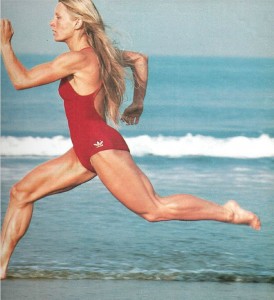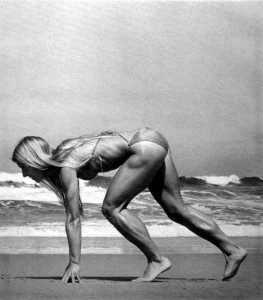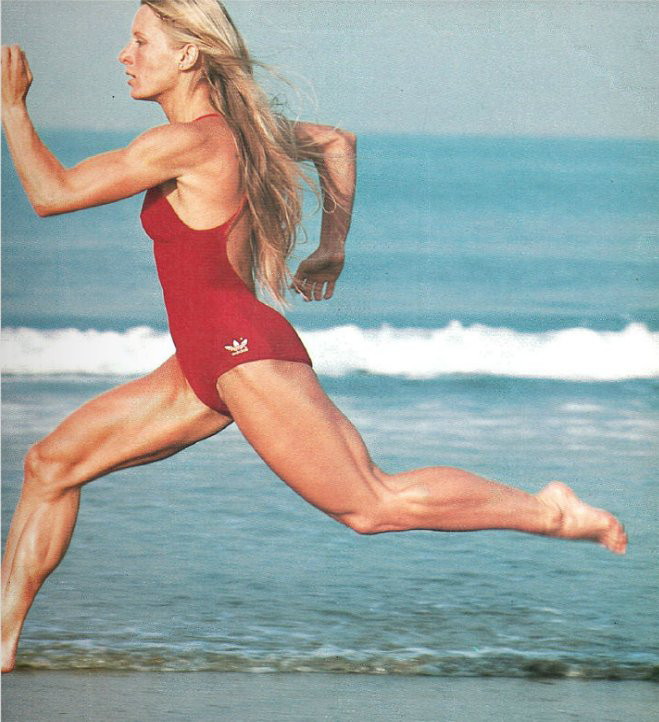LIVING LONG FOR GOODNESS SAKE
Jim Fixx,
b. 23 April 1932,
d.20 July 84 @ 52 years old.
Yul Brynner,
b. 11 July 1915,
d. 10 Oct 85 @ 65 years old.
☞ There we were, wife and self offering a fine cup of coffee to a guest who had just been treated to a dinner also made with some effort at our home table. It was not that the guest declined the coffee, but it was the way he did it. He could have simply declined by saying, no, thank you. But this was in San Francisco, a place where people harbor strong druthers and simmering agendas. Thus, it was not just a polite no, thank you. It was decidedly more emphatic:
“No, I don’t drink that swill!” it went. “And neither should you!”
Because this was early 70s, a Starbuck’s coffee shack did not thrive on every corner. No such thing. Good coffee in an espresso place in North Beach, maybe. Only a few knowledgeable folks were treated to the opportunity of grinding their own imported coffee beans, and only then by standing in a line that could (especially on Saturdays) stack out to the sidewalk in front of Freed’s Coffee Shop on Polk Street. The coffee-mad folks did so for the privilege of purchasing some pricey imported coffee beans. After procuring those precious nuggets, it was necessary to grind the beans— ours an authentic replica of an antique grinder with a hand-driven crank. The grounds were then poured into a filter paper placed over a Chemex coffee pot resembling an Erlenmeyer flask, followed by boiled water poured over the grounds. Yet it wasn’t actually boiling water. It was closer to 180 degrees which was theorized to be the optimum temperature to blast the coffee particles loose and free them for the best cup of coffee possible within the frail limits of human endeavor. Such was the “swill” the guest was offered.
Rather than a simple decline, what proceeded was the added tribute of a sermon. Seems as though one cannot get the merest response in those knowledgeable quarters without a preachment. And the sermon railing against coffee was conducted by one who had converted from the former life of a junkie before blossoming into a “health freak.” I didn’t make up that term, but “freak” is good.
1863: Englishman William Banting used a low-carb diet to lose weight and then wrote about it in the booklet “Letter on Corpulence.” It was such a hit that dieters asked one another how the “Banting” was going.
1903: In vogue: chewing each bite of food 32 times, for better digestion and weight loss.
1917: Los Angeles physician Lulu Hunt Peters introduced the world to calorie counting with the bestseller “Diet and Health With Key to the Calories.” Peters, who wrote for the women’s pages of the Los Angeles Times, started out with a pamphlet she sold for 25 cents, with the proceeds going to the Red Cross. It proved to be such a hit that it was later turned into a book.
1925: The cigarette diet coincided with the ad campaign “Reach for a Lucky instead of a sweet.” [Cigarettes were touted as a diet tool back in 1925]
1926: The Inuit diet: All the caribou, raw fish and whale blubber you can eat.
1930: The grapefruit diet, which would resurface two decades later as the Hollywood diet, made a splash by promising weight loss if adherents ate grapefruit at each meal. To this day, a halved grapefruit epitomizes “diet food,” and some experts say there’s something to it, as grapefruit is believed to be a natural appetite suppressant. Also: Stoll’s Diet Aid introduced us to the first of many liquid diet drinks.
1934: The bananas and skim milk diet, promoted by the United Fruit Co.
1950: The cabbage soup diet is one of the oldest fad diets still in use. “It seems to resurface with a new name every 10 to 15 years,” according to Diet.com. It is still popular today with dieters who are either immune to or don’t mind the gas and bloating that can accompany the diet. There is this bonus: You can eat as much cabbage soup as you can stomach.
1960: The Zen macrobiotic diet, a grain-heavy approach created by a Japanese philosopher.
1961: Weight Watchers launched, moving away from “dieting” and toward “eating management.”
1964: “The Drinking Man’s” by Robert Cameron was just what it sounds like, prompting the Harvard School of Public Health to declare it… unhealthful.
☞ At that time there arose a further blossoming of cook books promising a beatific purgation from the poor diet that prevented your vital fluids and innards from gaining your true health. One such book by Adele Davis was specifically pointed in that direction by the title alone: “Eat Right and Keep Fit.” Said author was very popular on the morning inquisition shows. One morning, while I drank a cup, I witnessed her get downright apoplectic over the idea of coffee.
So Jim, the caffeine nemesis guest, was right on track. Not only a gung-ho vegetarian, he was also literally on track when he took up running as a part of his eternal life regimen. So Jim, the guest, adapted Jim Fixx as an alter ego.
Jim Fixx? He offered the paradigm. He was the man who elevated running, a worthwhile pastime, into a philosophy, a justification, a religion. We might call it “a Fixxation.”
 That was when running was invested as a lively part of the national regimen. People ran their tushes off, with models like Jim Fixx and his female counterpart Gayle Oklinekova setting the pace. Olinekova helped to popularize the muscular athletic form in women. Check out the gams on that classical goddess! With all due respect, a woman doesn’t grow a pair of nutcracker thighs like hers by sitting around, watching Oprah and munching chocolates.
That was when running was invested as a lively part of the national regimen. People ran their tushes off, with models like Jim Fixx and his female counterpart Gayle Oklinekova setting the pace. Olinekova helped to popularize the muscular athletic form in women. Check out the gams on that classical goddess! With all due respect, a woman doesn’t grow a pair of nutcracker thighs like hers by sitting around, watching Oprah and munching chocolates.
Evidently, Ms. Olinekowva was an epitome of muscularity, but, sadly, I only know her by her obituary because she, along with Jim Fixx and his fan, Jim the never-drink-coffee runner— they all cashed in their tickets in the Great Commotion Opera fairly early. Fifty, or a little over.
Fixx must have believed that running distracts the Reaper. More running, more distraction. Just keep running. On the other reckless hand, there will always be people who seem to be dedicated to attracting said Reaper— like Yul Brynner.
1975: A doctor created a cookie containing “secret amino acid protein blend” that he “mixed “with his own hands” at his Florida medical practice. It promised to help control hunger and help patients stick to a reduced-calorie diet. By 2007, the cookie diet was introduced to the masses via a website. Also: The Pritikin Longevity Center opened in California and sounded the alarm about foods rich in saturated fat and cholesterol.
1976: The Sleeping Beauty diet sounds a bit like a vacation from the kids: Individuals were sedated for several days as a way to promote weight loss.
1981: The Beverly Hills diet helped popularize long-standing ideas about food combining, or, as it were, non-combining: Fruit, under this diet, should only be eaten alone. Thankfully, Champagne is dubbed “a neutral food” that can be enjoyed with anything.
1985: The cave man diet touted food from the Paleolithic era, the precursor to the Paleo diet.
1990s: Diets such as the vegetarian diet and the Mediterranean diet — old as history — became part of the vernacular.
1994: Bacon lovers cheered as Dr. Atkins said fat is our friend.
1995: “Enter the Zone,” by Barry Sears, ushered in the 40-30-30 ratio of carbs, fat and protein, and a flood of Zone cookbooks, snack bars and more.
1995: The Sugar Busters diet: Sugar was declared Public Enemy No. One.
1996: “Eat Right for Your Type” by Peter J. D Adamo paired diets with blood type.
2000: The self-explanatory raw. foods diet made an appearance.2003: “The South Beach Diet” by Arthur Agatston admonished us to ditch the “white stuff,” such as sugar, flour and baked potatoes.
2010s: “The Paleo Diet,” “The Paleo Solution” and “The Primal Blueprint” books helped us get in touch with our inner meat lover.
[Sources: The Academy of Nutrition and Dietetics, Diet.com and various Websites. rene.lynch(a latimes.com]
Looks like freedom, but feels like death.
Something in between, I guess.
Leonard Cohen
☞ Some people are just hard livers. And oftentimes, that’s where it catches them: the liver. In a Life magazine story about him, the cover photo shows Yul Brynner puffing like a locomotive while dancing. It’s almost as though he’s wishing to attract the Reaper’s attention. Daring the ol’ bugger.
The Life vignette was on the set where Brynner played the role of a mad Karamazov brother being whirled about by his passions. Yul probably didn’t have to act too hard on that role. Didn’t need a lot of method acting on over-ruling passions. He seemed to have had them, galore.
Given those facts based on the early demise of “right-thinking people” we here in the Trying Times bunker have hunkered down on the subject of longevity. And darn it, the longer we wonder about it, the more curious it gets. Just to dramatize the odd differences people experience along those lines, we began to imagine a live comparison between the clean-living Jim Fixx and his older but not so much wiser contemporary, the rakish devil-may-care Yul Brynner…
 ☞ We can imagine Jim Fixx, having completed his ritual stretches. Faithfully flexing muscles and tendons, he’s already out running in preparation for his next marathon. So there he is, jogging in the early a.m. when who should come cruising down the street but Yul Brynner in a stretch limo.
☞ We can imagine Jim Fixx, having completed his ritual stretches. Faithfully flexing muscles and tendons, he’s already out running in preparation for his next marathon. So there he is, jogging in the early a.m. when who should come cruising down the street but Yul Brynner in a stretch limo.
Brynner is between wives, so he’s out with some babes after an all-nighter.
“Hey, Jim! Is that you?”
Jogging along, the first thing Fixx sees as the limo pulls up beside him is the window lowering to show off that twinkle in Yul Brynner’s eye. And then that quick smirky smile. The smile Yul always flashed in scenes, even when he was about to whack off heads. And that stride of his! Ya know, an acquaintance confessed that on her honeymoon she got so horny she hustled her husband back to the hotel right in the middle of the movie just by seeing Yul stride across the wide screen.
Puffing on something— a cigarette or a joint— Brynner and the women are handing around glasses full of champagne. “Come on, Jim. We don’t have any coffee. I don’t drink that swill, but there’s plenty of this”— Yul stretching out his hand with a glass in his fist— “Join us.”
Of course the champion runner will not hear of it. Founder of the goose-jogging movement, author of a wad of books on the subject— he’s fixed to the street, pumping those peds, keeping in shape for the next 20-mile event.
“Come on, Jim. Michelle wants to meet you. She’s the red-head.”
“Hi, Jim” Michelle coos. “Nice legs.”
But Jim is fixed on pumping down the road. He’s fixed on the conviction that there are things we do— we must do— to help our destiny through.
An omen in the bone,
Of Death’s tremendous nearness…
Emily Dickinson
☞ To be sure, those who put themselves in harm’s way put their destiny to a greater challenge. Snake handlers are often bit; so it might be wise to avoid handling poisonous reptiles. Yet snake handlers may die of old age, too. Junkie writer William Burroughs and rock musician Keith Richards both have probably had more needles sticking in them than a pine tree, yet Burroughs lived to be 80 and Richards— far as we can see— is still rocking.
Fate versus individual will began as a Greek deal, one force always humping the other. No matter how a bloke might try to change it, Fate is hovering over his head, smirking. There is a destiny that shapes our lives, writes Shakespeare, rough hew them how we will. Death is the all-time transcendent bummer, and he sure is coy— if not tricky— about longevity. Sir Thomas Browne, 17th century doctor and philosopher, registered a poetic summation of our fragility when he testified: “I who have studied the parts of man know upon what tender filaments that fabric hangs.”
Make no mistake, there’s not much wrong with fighting fat and keeping fit. Consider that there are more obese people than those merely over-weight waddling around today. Their mere physical presence on the earth seems at times a burden, in addition to the chagrin caused by their wanton behavior. So Fixx and his Addida friends tried to do the nation a favor.
But out of that wave there comes within our midst a brand of Americans who feel superior about it all. There are sports so self-righteous about running they deserve the label of goose joggers. They come off as zealous troopers jogging off to a new regime of superiority. With the proper attention, the assiduous application of dietary supplements and drugs— proper drugs— they seem convinced they will beat the odds. And good on ‘em if they do. But there’s their model, gone at 52.
And then there’s Yul Brynner who got repentant in the end. Realization of how he’d screwed up was enough to prompt him to film a TV message to be aired posthumously. The message was clear: “DON’T SMOKE!”
 The old rake was truly repentant. He knew he screwed up, but he was at least able to stick around till he was 65 and repent at leisure, while my good and abstemious guest in San Francisco, who avoided coffee and meat while raging against the evils of smoking, checked out at about the same age as his hero, Jim Fixx, who worked out and stayed confident— as did the sturdy Gayle Olinekova, who made a fit corpse at barely 50.
The old rake was truly repentant. He knew he screwed up, but he was at least able to stick around till he was 65 and repent at leisure, while my good and abstemious guest in San Francisco, who avoided coffee and meat while raging against the evils of smoking, checked out at about the same age as his hero, Jim Fixx, who worked out and stayed confident— as did the sturdy Gayle Olinekova, who made a fit corpse at barely 50.


Comments are closed.